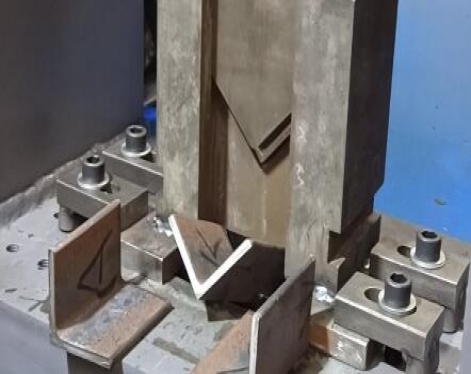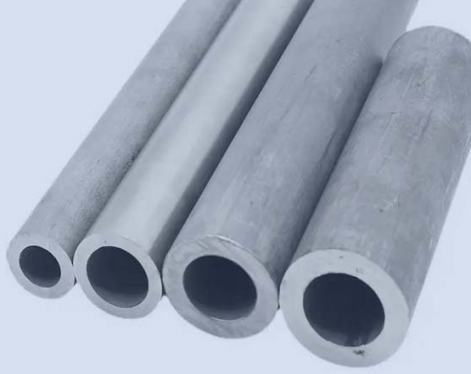Causes of angle steel distortion:
There are many reasons for angle steel distortion, which may be due to uneven materials, improper processing, unbalanced stress, etc. Usually, it is because the angle steel is subjected to uneven stress during processing, which causes the angle steel to deform and thus distort. In the following processing, these factors need to be considered and targeted to effectively solve the problem.
The method of dealing with angle steel deformation depends on the severity and specific circumstances of the deformation. Here are some common treatment methods:
1. Heat treatment
For angle steel deformation caused by temperature changes, heat treatment can be used to repair it. This involves using appropriate temperature and time to reshape the angle steel to restore it to its original state. Heat treatment needs to be carried out in well-controlled heat treatment equipment to ensure that the required temperature and time are reached.

2. Machining
For minor angle steel deformation, it can be repaired by machining. This includes using cutting, grinding, drilling and other methods to remove or reshape the deformed part to restore it to its original shape.
3. Cold bending repair
For some types of angle steel deformation, such as bending deformation, you can try to use cold bending repair methods. This involves placing the angle steel in an appropriate fixture and applying appropriate force to gradually restore its shape.
4. Welding repair
For severe deformation, welding repair methods may be required. This involves using appropriate welding equipment and materials to connect the deformed part to the original structure and perform necessary shaping and trimming.
5. Material replacement
If the deformation of the angle steel is so severe that it cannot be repaired, or there are material quality problems, you may need to consider replacing the angle steel. When replacing the angle steel, you need to select appropriate materials and specifications to ensure that the required mechanical properties and use requirements are met.
What are the solutions depending on the location of the deformation?
1. For outer bending deformation, the convex part of the angle steel can be placed flat on the anvil and the convex edge of the angle steel can be hammered to straighten it. Note that the inner side of the convex angle steel should not be hammered, because the inner side of the convex angle steel will be straightened together with the edge of the angle steel.
2. For inward bending deformation, the correction principle is the same as that for outward bending, but when hammering, the edge of the angle steel must be perpendicular to the surface of the anvil to avoid skew that affects the effect 1. For twisting deformation, one end of the twisted angle steel can be clamped on a bench vise, and the right-angled side of the other end of the angle steel can be clamped with a wrench. The angle steel can be twisted in the opposite direction and slightly exceeded the normal state of the angle steel. Repeating this several times can basically eliminate the twisting deformation.
3. For angle deformation, if the angle of the angle steel is greater than 90 degrees, it can be corrected in the V-shaped groove iron, and the outward-inclined part can be corrected with a sledgehammer; or the angle steel edge can be placed obliquely on the platform and hammered with a sledgehammer to reduce its angle.
In general, the distortion of angle steel is a common phenomenon, which requires us to deal with it according to the specific situation. In actual operation, the appropriate treatment method can be selected according to the material, specification and degree of distortion of the angle steel to solve this problem. At the same time, before performing relevant operations, it is necessary to carefully understand and master the relevant knowledge and skills to ensure smooth and safe operation.
There are many reasons for angle steel distortion, which may be due to uneven materials, improper processing, unbalanced stress, etc. Usually, it is because the angle steel is subjected to uneven stress during processing, which causes the angle steel to deform and thus distort. In the following processing, these factors need to be considered and targeted to effectively solve the problem.
The method of dealing with angle steel deformation depends on the severity and specific circumstances of the deformation. Here are some common treatment methods:
1. Heat treatment
For angle steel deformation caused by temperature changes, heat treatment can be used to repair it. This involves using appropriate temperature and time to reshape the angle steel to restore it to its original state. Heat treatment needs to be carried out in well-controlled heat treatment equipment to ensure that the required temperature and time are reached.

2. Machining
For minor angle steel deformation, it can be repaired by machining. This includes using cutting, grinding, drilling and other methods to remove or reshape the deformed part to restore it to its original shape.
3. Cold bending repair
For some types of angle steel deformation, such as bending deformation, you can try to use cold bending repair methods. This involves placing the angle steel in an appropriate fixture and applying appropriate force to gradually restore its shape.
4. Welding repair
For severe deformation, welding repair methods may be required. This involves using appropriate welding equipment and materials to connect the deformed part to the original structure and perform necessary shaping and trimming.
5. Material replacement
If the deformation of the angle steel is so severe that it cannot be repaired, or there are material quality problems, you may need to consider replacing the angle steel. When replacing the angle steel, you need to select appropriate materials and specifications to ensure that the required mechanical properties and use requirements are met.
What are the solutions depending on the location of the deformation?
1. For outer bending deformation, the convex part of the angle steel can be placed flat on the anvil and the convex edge of the angle steel can be hammered to straighten it. Note that the inner side of the convex angle steel should not be hammered, because the inner side of the convex angle steel will be straightened together with the edge of the angle steel.
2. For inward bending deformation, the correction principle is the same as that for outward bending, but when hammering, the edge of the angle steel must be perpendicular to the surface of the anvil to avoid skew that affects the effect 1. For twisting deformation, one end of the twisted angle steel can be clamped on a bench vise, and the right-angled side of the other end of the angle steel can be clamped with a wrench. The angle steel can be twisted in the opposite direction and slightly exceeded the normal state of the angle steel. Repeating this several times can basically eliminate the twisting deformation.
3. For angle deformation, if the angle of the angle steel is greater than 90 degrees, it can be corrected in the V-shaped groove iron, and the outward-inclined part can be corrected with a sledgehammer; or the angle steel edge can be placed obliquely on the platform and hammered with a sledgehammer to reduce its angle.
In general, the distortion of angle steel is a common phenomenon, which requires us to deal with it according to the specific situation. In actual operation, the appropriate treatment method can be selected according to the material, specification and degree of distortion of the angle steel to solve this problem. At the same time, before performing relevant operations, it is necessary to carefully understand and master the relevant knowledge and skills to ensure smooth and safe operation.









